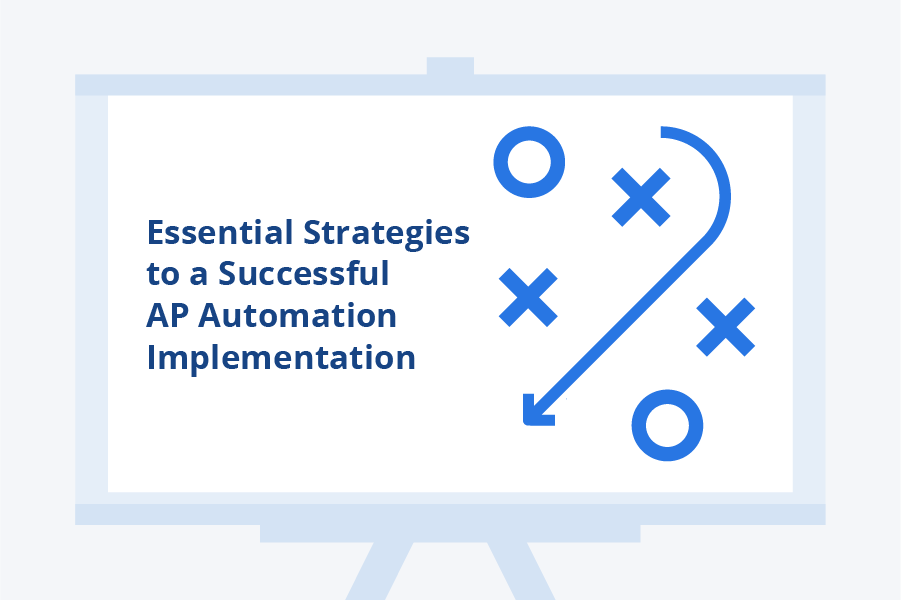Essential Strategies to a Successful AP Automation Implementation

Implementing new technology can be a challenge. There are many issues that can prevent a digital transformation project from succeeding, such as organizational readiness, buy-in from key stakeholders and employee training. According to a recent Forbes article, you can increase the likelihood of an efficient and low-stress digital transformation by ensuring that your project is properly defined and communicated.
As many organizations work towards AP automation as their next technology change project, there are several essential strategies to employ to ensure a successful implementation:
 Create the Business Case
Create the Business Case
To successfully obtain internal buy-in from all key stakeholders, you need to put together a business case that identifies the benefits that outsourcing AP automation will provide. Key benefits include:
- Reducing manual entry errors and increasing productivity.
- Decreasing costs by taking advantage of early payment discounts and duplicate detection.
- Minimizing risk due to increased protection against cyber attacks.
- Increasing controls and visibility for management.
Creating a business case that demonstrates the reasons why AP automation is needed and how it will benefit and support the organization will help key stakeholders get on board with the new technology and processes.
 Put Together the Right Team
Put Together the Right Team
Implementing new technology takes a team of people. Define the key players who will be impacted by your AP automation project. Depending on the type of outsourcing and level of integration required for your project, your internal IT department may need to be involved, as well as your AP managers and any individual users who will be managing expectations and approval workflows. Get input from your team members early on in the implementation process to ensure that they understand the challenges you are trying to solve.
 Set Clear Expectations
Set Clear Expectations
Maintain open lines of communication with your outsource provider to ensure that expectations are clear in terms of budget, resources and activities. Ask the necessary questions to ensure that your timelines are realistic. Clear and consistent communication also needs to be maintained with the core members of your implementation team. When all of your stakeholders are aware of and understand the implementation plan, they will be better prepared for upcoming approvals and due dates.
 Develop a Comprehensive Implementation and Training Plan
Develop a Comprehensive Implementation and Training Plan
Start working on your roll-out and training plan early to ensure your project stays on track. Your outsource provider will help you create realistic implementation timelines as well as a detailed plan for training end users on the new technology. Providing your employees with thorough training will help you fully leverage your new AP automation solution and realize the greatest benefit. An extensive implementation plan should include all the tasks that need to be completed with specified due dates. As part of your roll-out plan, be sure to include time for communicating changes in process to your vendors.
 Complete Robust Testing Before Going Live
Complete Robust Testing Before Going Live
Build in sufficient time in your implementation calendar to test as many scenarios as your resources allow to ensure any edge cases are dealt with appropriately. Robust testing will also verify that the new technology satisfies the requirements and objectives you identified in the scope of work with your outsource provider at the beginning of the project and whether any enhancements or modifications are required. It is important to continue auditing the efficiency of your new processes after implementation. You can do this by tracking key metrics such as invoice processing time, payment errors and days payable outstanding to ensure your AP automation solution is achieving optimal performance after implementation.
Octacom is a SOC 2, Type II Audited enterprise software and services company focused on document and data automation solutions, including automated data capture. Founded in 1976, Octacom specializes in accounts payable automation and automated invoice processing, among other digital / automated business process outsourcing services.
If your organization is looking to learn more about our solutions and services, please contact us and we would be glad to help.
